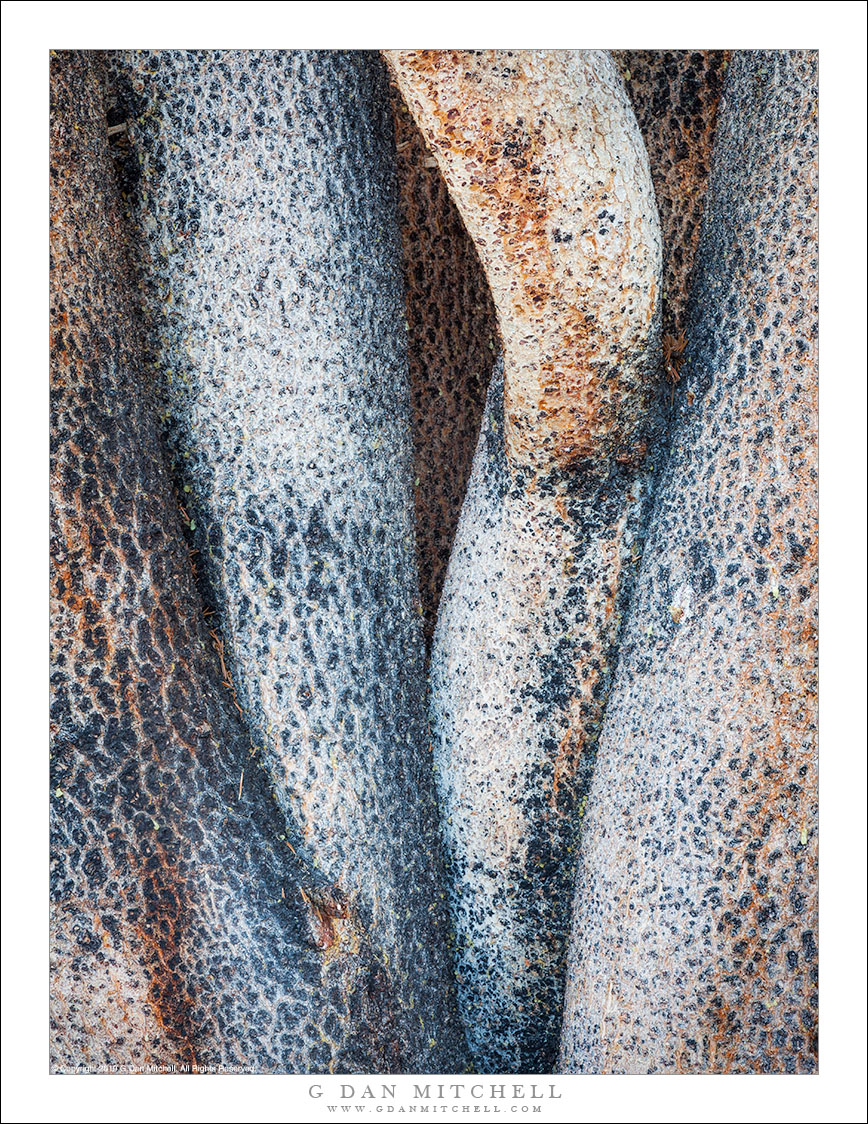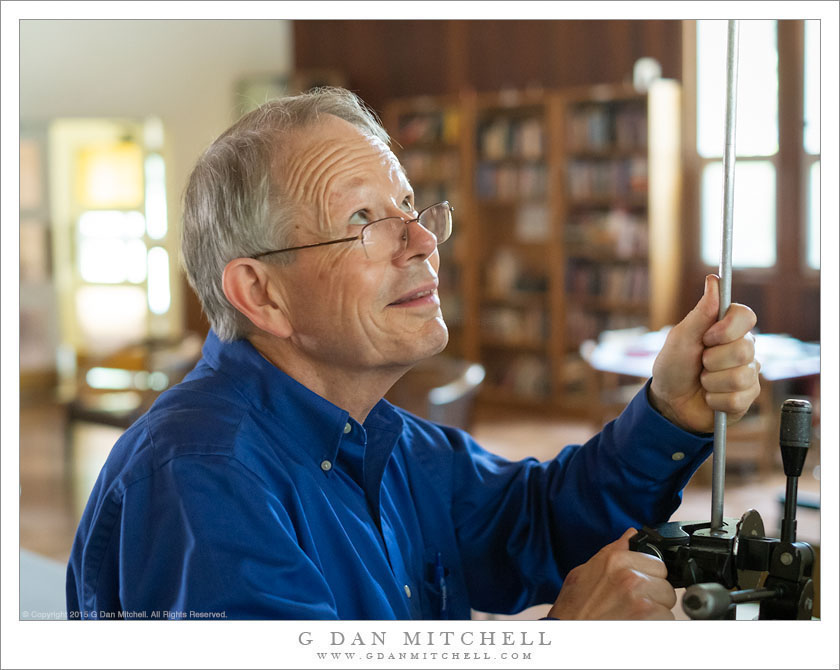
Intertwined Trunks. © Copyright 2019 G Dan Mitchell – all rights reserved.
Tightly laced tree trunks, Southern Sierra Nevada.
This photograph took some time to arrive in this form. Originally there were two versions of the subject — one was a vertical format version in black and white while the other was a horizontal format color renditions. (If you look around on my website you should be able to find both of those.) I always liked the abstract flow of the portrait-orientation black and white photograph, but I also liked the unusual coloration in the landscape-orientation color versions. And — duh! — it only took me several years to decide that what I really wanted to do was combine that flow and those colors in this version! Sometimes it is not obvious, at least not to me, how I will ultimately “see” a photograph until quite some time after I push the shutter release button.
The photograph explores something that has long intrigued me about high country trees in the Sierra Nevada. While they are, obviously, living things, they live on time scales that are much longer than we know. Even these “stunted” (to use the common description) high elevations trees, despite their relatively small size, are often many hundreds of years old. As such, they seem to me to occupy an intermediate state between our shorter frame of reference of “living” and the much longer time scale of geology. In some cases the trees take on a character that almost seems closer to that of rock. The colors in the photograph may also warrant some explanation, since they may seem unusual for trees. In typical light, these trees would mostly appear to be a combination of grays and browns, but I these trunks were in deep shade and illuminate by late-day light spilling in from the very blue sky.
G Dan Mitchell is a California photographer and visual opportunist. His book, “California’s Fall Color: A Photographer’s Guide to Autumn in the Sierra” is available from Heyday Books and Amazon.
Blog | About | Flickr | Facebook | Email
Links to Articles, Sales and Licensing, my Sierra Nevada Fall Color book, Contact Information.
All media © Copyright G Dan Mitchell and others as indicated. Any use requires advance permission from G Dan Mitchell.


